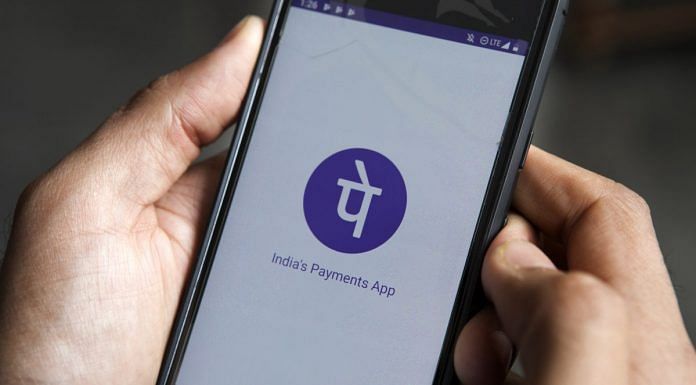India aims to curb cash – but this time it wants to do it properly.
A cashless society wasn’t the original goal of the country’s draconian currency ban in November 2016. But when an acute shortage of banknotes gave a fillip to digital wallets, that purpose was added as an afterthought to justify an act of farcical state overreach.
The real innovation in mobile payments in India began a few months prior to the cash ban. It’s called a unified payment interface, or UPI. The name is clunky, but the idea is simple. One smartphone owner who’s a customer of Bank A can request a payment from, or initiate a payment to, another owner who has an account with Bank B. Neither party needs to know anything more than each other’s mobile number or a virtual ID. They don’t even need to use the same mobile app to transact.
In this, India was ahead of even Asian money centers like Singapore and Hong Kong. With more than 140 Indian banks sharing the interface, and Alphabet Inc.’s Google and Facebook Inc.’s WhatsApp offering instantaneous payment services on it, UPI has become a keenly watched experiment. By the looks of it, things are going well: From nothing to 800 million monthly transactions in less than three years, India’s UPI has taken off. Growing smartphone use and crashing data costs have helped immensely.
Now a committee set up by the central bank under Nandan Nilekani, the technology entrepreneur best known for creating the world’s largest repository of citizens’ biometric data, wants to expand the platform to foreign-currency remittances by the non-resident Indian diaspora as well as to settle residents’ payments when they travel overseas. “This is like Chinese users being able to use WeChat in many jurisdictions,” Nilekani’s panel said in its report released this week.
Assuming the suggestion gets implemented, India will have its own WeChat Pay. But since it’s an open-source technology, there won’t be one Tencent Holdings Ltd. owning it. Google and WhatsApp will fight for market share. So will PhonePe, now owned by Walmart Inc. as well as new entrant Amazon Pay, which hasn’t made much of a dent globally into PayPal’s dominance of e-commerce. Indian banks that run their own UPI services, as well as Indian tycoon Mukesh Ambani’s JioMoney, will be in the race, together with Paytm, a popular digital wallet.
Who will succeed in this crowded field? News reports give a lead to Google, though that could change as people-to-merchant payments start to dominate people-to-people transactions. In e-commerce payments, competition will be stiff between Amazon.com Inc. and Walmart. Online sales, though, are a sliver of overall Indian retail. With more than 300 million subscribers for his Jio mobile service, Ambani now wants to win over small stores, which are reluctant to go cashless because of high card fees. If his telecom, retail and payments operations can jump the hurdle of a new data privacy law and come together seamlessly, a Jio phone user visiting her neighborhood grocer could get discount vouchers via SMS from Unilever’s Indian unit and in-store credit offers from State Bank of India. And if Jio runs a so-called open-banking platform to help small stores order goods and manage cash, consumer spending will circulate between merchants’ and suppliers’ accounts held at Jio Payments Bank. The float will be Ambani’s moat.
Despite all the drama around the currency ban, cash is still king in India. After growing fivefold in five years, annual per capita digital transactions have reached 22, compared with 34 in Indonesia and 782 in Singapore in 2017. Nilekani’s panel is pushing for 220 by March 2021. That’s a lot of transactions in a country of 1.3 billion people. With fair competition between local players and global tech, 10-fold growth may not be a pipe dream. Walmart shareholders, worried about the costly Flipkart acquisition, will be rooting for PhonePe. Masayoshi Son and Warren Buffett will keep an eye on their Paytm stakes. Everyone will watch Ambani.
India going cashless will be as much a story of Prime Minister Narendra Modi’s second term as it was of his first. This time around, it may have a happier ending. – Bloomberg.
Andy Mukherjee is a Bloomberg Opinion columnist covering industrial companies and financial services. He previously was a columnist for Reuters Breakingviews. He has also worked for the Straits Times, ET NOW and Bloomberg News.
Also read: Between gaon and governance: How Modi govt’s Digital India is bridging rural-urban divide






